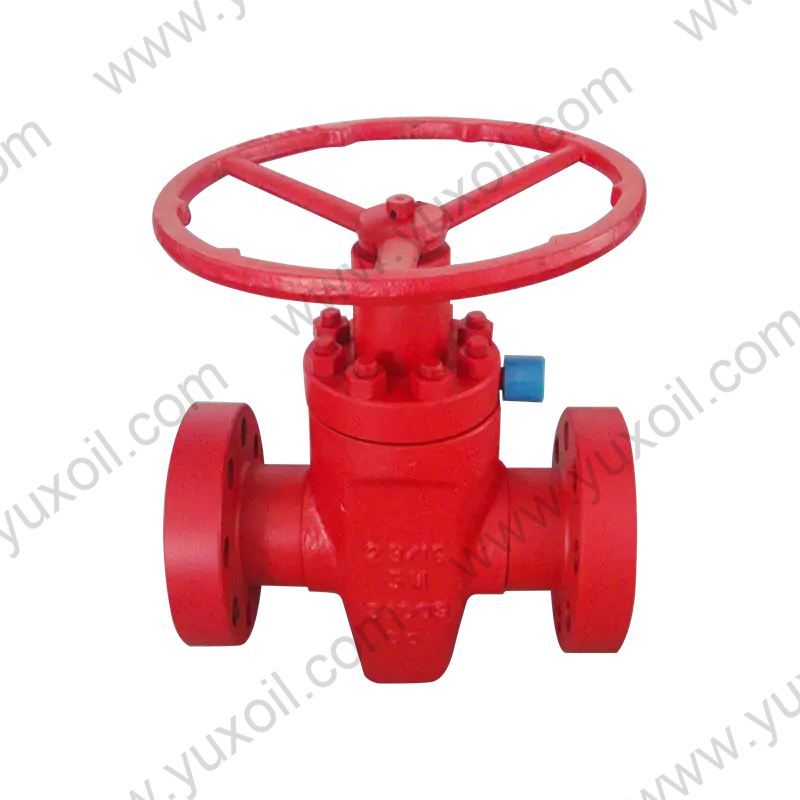Introduction
The API 6A Gate Valve is a commonly used high-pressure valve in the oil and gas industry, widely applied in wellhead assemblies and Christmas tree systems. The API 6A standard, developed by the American Petroleum Institute (API), specifies the design, materials, and testing requirements for wellhead equipment.
In high-pressure, high-temperature, and corrosive environments, selecting the right API 6A Gate Valve is critical to ensure operational safety and production efficiency.
Basic Concepts of API 6A Gate Valve
Overview of API 6A Standard
- API 6A is one of the core standards in the oil and gas industry, covering wellhead equipment, Christmas trees, valves, and other critical components.
- It specifies detailed requirements for design, materials, testing, pressure ratings, and temperature ratings.
- Valves certified under this standard guarantee reliability and safety under extreme operating conditions.

Working Principle of Gate Valves
A Gate Valve operates by raising or lowering a gate to control fluid flow.
- When the gate is fully lifted, the flow path is unobstructed, resulting in minimal pressure drop.
- When the gate is lowered, the valve achieves tight shut-off, capable of withstanding high pressures.
- Ideal for high-pressure, high-temperature, and large-volume oil and gas transportation.
Main Classifications of API 6A Gate Valves
By Structure
- Slab Gate Valve: Single-gate design, suitable for high-pressure gas wells with low flow resistance.
- Expanding Gate Valve: Double-gate design, expands during closure to provide superior sealing.
By Actuation
- Manual Gate Valve: Operated by handwheel, suitable for lower pressure wellheads.
- Hydraulic/Pneumatic Gate Valve: Powered by hydraulic or pneumatic systems, often used for remote control.
- Electric Gate Valve: Integrated with automation systems, ideal for smart oilfields.
By Application
- Wellhead Gate Valve: Installed at the wellhead to control fluid flow.
- Christmas Tree Gate Valve: Used in production trees, capable of withstanding higher pressures.
- Test Valve: Used for pressure testing and maintenance operations.
Key Factors in Valve Selection
Pressure Ratings (PSL, PR, PR1/PR2)
The first step in selection is determining the Pressure Rating. API 6A defines pressure ratings ranging from 2,000 psi to 20,000 psi.
API 6A Common Pressure Ratings Table:
| Pressure Rating (psi) |
Code |
Typical Applications |
| 2,000 |
API 2000 |
Conventional low-pressure wellhead |
| 5,000 |
API 5000 |
Medium-pressure gas wells, trees |
| 10,000 |
API 10000 |
High-pressure gas wells, deep wells |
| 15,000 |
API 15000 |
Ultra-high-pressure, sour gas wells |
| 20,000 |
API 20000 |
Deepwater drilling, extreme service |
Temperature Ratings (API 6A: K, L, P, U, etc.)
API 6A specifies different Temperature Ratings:
- K (-60℃ to 121℃): Suitable for arctic environments.
- L (-46℃ to 121℃): Common for onshore oilfields.
- P (-29℃ to 121℃): Standard mid-temperature environment.
- U (-18℃ to 121℃): Suitable for tropical oilfields.
Material Requirements (Material Class)
Valve material selection is crucial:
- Carbon Steel: Cost-effective, used in conventional wells.
- Low Alloy Steel: Suitable for medium- to high-pressure applications.
- Stainless Steel: Corrosion-resistant, ideal for CO₂-containing wells.
- Inconel, Duplex Alloys: Excellent resistance to H₂S, meeting NACE MR0175 requirements.
Valve Size and End Connections
- Flanged: Common in onshore facilities.
- Studded: Strong pressure capacity, used in high-pressure trees.
- Clamp: Popular in offshore deepwater platforms, easy to assemble/disassemble.
Sealing Types
- Metal-to-Metal Seal: Withstands high temperature, high pressure, and erosive service.
- Elastomer Seals: Cost-effective, suitable for medium- and low-pressure service but limited corrosion resistance.
Maintenance and Replacement Cycles
In harsh environments, seals and actuators require regular replacement. Availability of spare parts and ease of maintenance should be considered in valve selection.
Case Studies in API 6A Gate Valve Selection
Case 1: High-Pressure Natural Gas Wellhead
- Pressure: 15,000 psi
- Temperature: -29℃ to 121℃
- Recommendation: Expanding Gate Valve, Metal-to-Metal Seal, Stainless Steel material
Case 2: Sour Gas Well (H₂S Containing)
- Medium: High concentration of hydrogen sulfide
- Requirement: NACE MR0175 compliance
- Recommendation: Inconel Alloy Gate Valve, Metal-to-Metal Seal
Case 3: Offshore Deepwater Drilling Platform
- Conditions: High pressure + remote operation
- Recommendation: Hydraulic or Electric Gate Valve, Flanged or Clamp connection
Procurement and Supplier Selection Guidelines
- Verify whether the supplier holds valid API 6A certification with third-party inspection reports.
- Evaluate delivery schedules, after-sales support, and spare parts availability.
- Prefer suppliers with global project references, ensuring reliability in complex environments.

 2025.09.22
2025.09.22
 Industry News
Industry News
